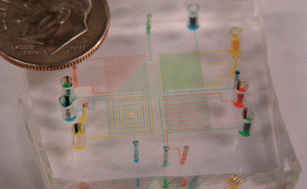High-density fabrication of normally closed microfluidic valves by patterned deactivation of oxidized polydimethylsiloxane†
Abstract
The use of polydimethylsiloxane (PDMS) in microfluidic devices is extensive in academic research. One of the most fundamental treatments is to expose PDMS to plasma


 Please wait while we load your content...
Please wait while we load your content...